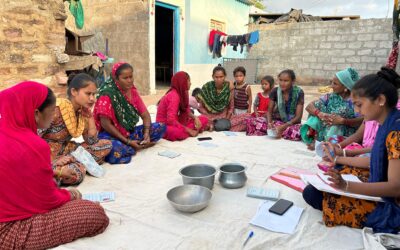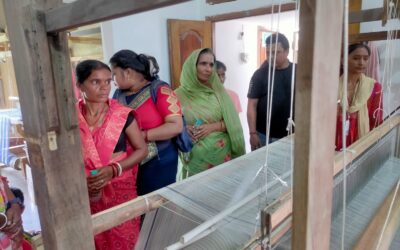Imagine moving-in to a new place with your family for four months carrying all your possessions. How about doing it every year!
While working with Katkari tribe in Raigad, on their social upliftment, one of the key issues we battle every year is Migration. They leave their villages in agricultural off-season, from November to March. Almost all of them go and settle to work at brick kiln sites in and around Raigad. Though the situation is not as bad as it used to be twenty years ago, when the Katkaris would migrate to far-off places like Gujarat and Karnataka, it is hardly a respite because the crux of problem remains that of displacement.

One of the major challenges of this annual ritual of migration is its impact on education of children in tribal families that migrate. Katkaris are known to have strong familial ties. That or a sense of responsibility, when they move to brick kilns, they take their kids along. Scores of Katkari teens and even younger children drop out of schools during that time giving a huge blow to the efforts and money spent on educating them. It does not end there.
These children then work as labor at brick kilns which is a major concern. Plus, the living conditions where they build their temporary houses, are extremely hostile. It is not the soft paved floor of their village homes but the bare dusty ground of thatched shanty where they lie after a day’s work, at a time of the year when ghats are dry and cold seeps in at the wee hours of midnight.

Temporary settlements around the brick kiln
I got to see it first-hand when I visited a brick kiln where villagers from Kavilhal in Mangaon had migrated. The visit was facilitated by the honorable sisters of Amardeep Charitable Trust, which had been working with tribal people for last 25 years in and around Mangaon. The primary objective of the visit was to present migrants with the results of a study that had been done with Amardeep trust, to analyse the viability of migration and efforts involved in it, in lieu of loan taken by tribal families. We found that they had taken money for Ganpati and Shimga festivities and were supposed to work for four months at the brick kiln to pay it off.
If we talk numbers, the loan amounted to an average of INR 4000 per month per family or per group (group comprises of a couple – man and wife). If we compute their daily earnings for four months, it comes to INR 180 approximately considering they work six days per week. If there are as many as 4-5 members in a family/group, then the per head wages would reduce drastically to about INR 90 per day. This calculation doesn’t even account child labor.
As per the guidelines, there is a fixed quota of bricks that needs to be produced at a kiln on daily basis. It may range from 2000 to as high as 4000. The work is distributed in a rota and includes excavating, mixing, pasting, molding, laying and finally firing after preparing the kilns using tinder and firewood for combustion – a thoroughly intensive physical process.
It was eye-opening to visit and know these perspectives I never thought of before. We spoke to a lot of tribal people. They were aware of the fact that they were earning lesser than what a daily wage labor would get otherwise (250-300 in Raigad) but it was the prospect of getting lump sum amount, at a time when they most need it, is what keeps them bringing back at these brick kilns year after year.
Due to lack of water in villages, no agricultural activity can take place leaving them with no option but to route towards brick kilns which is a time-tested source of livelihood for them. Surprisingly, many continue to do so just out of habit. For absence of other life skills and hence, viable alternative livelihood options, or sometimes just for being in a collective and acting like one, they continue to migrate.
To end annual migration at brick kilns, Katkaris not only require sustainable livelihood options but also a lot of behavior change. In words of Ganpat Sakharam Waghmare, a migrant tribal of Kavilhal, “It is only ninety rupees a day but it is assured, real ninety rupees which I have already pocketed, and even spent.”




Hi,
I don’t quite agree with your diagnosis as “…crux of problem remains that of displacement”. Lots of people migrate/displace every year, all across the world, in search of better livelihood options, in quest of their ambitions, because they can’t find them in their hometowns. They are fighting hard to pull themselves out of poverty and continue with their lives when agriculture is off limits, and one must salute their grit.
I also disagree with your prescription – Katkaris not only require sustainable livelihood options but also a lot of behavior change -, albeit partially. They require livelihood options, which may be true, but need not necessarily be in their hometowns.If they have realised that getting out of poverty by living in a slum of Mumbai is better than starving and dying in their hometown when there is no water, we must respect that and not seek to ‘change their behaviour’.
Would like to know what you think…